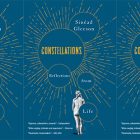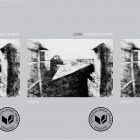Humor and Moralizing in The Wasp Factory by Iain Banks
 It is not uncommon to hear two different reactions to The Wasp Factory by Iain Banks: “It’s hilarious” and “It’s horrible.” Early on, the protagonist Frank Cauldhame admits to killing three children younger than himself. The narrative proceeds in such a way that these deaths are only revealed little by little, so that readers begin to feel complicit in them as voyeurs.
It is not uncommon to hear two different reactions to The Wasp Factory by Iain Banks: “It’s hilarious” and “It’s horrible.” Early on, the protagonist Frank Cauldhame admits to killing three children younger than himself. The narrative proceeds in such a way that these deaths are only revealed little by little, so that readers begin to feel complicit in them as voyeurs.
Two years after I killed Blyth I murdered my young brother Paul, for quite different and more fundamental reasons than I’d disposed of Blyth, and then a year after that I did for my young cousin Esmerelda, more or less on a whim.
That’s my score to date. Three. I haven’t killed anybody for years, and I don’t intend to ever again.
It was just a stage I was going through.
Cauldhame invokes common sense and sympathy, already beginning to show in the passage quoted above, to keep readers on his side. Problematically from a moral standpoint, though, the somewhat trite ending doesn’t punish readers for their voyeurism. This is notably different from, say, Nabokov’s Lolita, which has an obvious turn that gives readers a chance to redeem the voyeurism that occupied the first half of the novel by indulging in an increasing sense of moral superiority toward Humbert Humbert in the second half. The Wasp Factory offers no such redemption.
Then again, readers do develop a sense of moral superiority toward Frank Cauldhame for other reasons. Cauldhame even invites this by expressing it toward himself, such as in this moment when he christens a new catapult with a name:
So there were parts of me that watched the naming ceremony for the new catapult with amusement, even contempt. In that state inside my head, this is like intellectuals in a country sneering at religion while not being able to deny the effect it has on the mass of people.
What makes the novel funny in spite of the horrific things Cauldhame does is the over-the-top nature of what occurs. The whole reason for christening his new catapult is the loss of his original during a full-scale war against a rabbit warren because one of the rabbit bucks attacked him. The situation is ludicrous from the start. What are the odds of a buck attacking a kid who shoots him with an air rifle? It reads like the killer rabbit scene in Monty Python’s Holy Grail: “It was coming at me like a bullet, head shaking, lips curled back, teeth long and yellow and by far the longest I’d ever seen on a rabbit. … The rabbit was on me in a half second, heading straight for my throat.” Are readers supposed to take this seriously? Yet Cauldhame’s blend of self-mockery and twisted sense of the sacred are difficult to resist, as the remainder of his catapult naming ceremony demonstrates:
In the ceremony I smeared the metal, rubber and plastic of the new device with earwax, snot, blood, urine, belly-button fluff and toenail cheese, christened it by firing the empty sling at a wingless wasp crawling on the face of the Factory, and also fired it at my bared foot, raising a bruise.
Parts of me thought all this was nonsense, but they were in the tiny minority. The rest of me knew this sort of thing worked. It gave me power, made me part of what I own and where I am. It makes me feel good.
This logic is consistent with Cauldhame’s absurd but self-justified actions throughout the book. The death of Esmerelda is another glaring example, given that Cauldhame ties her to a massive kite and allows her to float away over the North Sea. Really? No wonder some readers have classed the book as a chilling but funny examination of a “child psychopath.”
This novel can indeed be read as a weird work of dark humor, a thought experiment with no real significance. Or is that an oversimplification that distances Cauldhame from readers unnecessarily? The influence of Ursula Le Guin on Banks is attested, and the presence of certain themes begs for this novel to be read in light of Le Guin’s The Left Hand of Darkness. Banks concludes The Wasp Factory with an anticlimactic revelation that “Frank” Cauldhame is actually “Frances,” a girl—which does not in any way excuse Cauldhame’s deeply immoral behaviors. The gender of a person has no inherent bearing on that person’s morality. So why does Banks end with this, of all things? In light of it, a question readers might ask themselves is this: Who else besides a child psychopath regularly claims a certain privilege over the lives of others while obsessively justifying their right to do so?
The answer, if today’s political climate is any indicator, is simple: men in positions of power.
Lately the phrase “toxic masculinity” has cropped up with greater frequency in US media for a number of reasons: acts of domestic terrorism all too often carried out by white male shooters, the #MeToo and #TimesUp movements addressing sexual assault and harassment. Likewise, when The Wasp Factory is reread in light of the revelation that Frank is Frances, the novel proves to be very interested in—even obsessed with—toxic masculinity, too. It’s an attempt to explore how violence is rationalized, often via the expectation of sympathy and understanding from the very people who are most harmed by it.
Cauldhame is militantly protective of his family’s island, tortures and kills small animals, hoards weapons, builds pipe bombs, marks territory by urinating on it, gets drunk on the weekends, and wishes he looked more “dark and menacing.” All of these factors and more add up to a caricature of masculinity. Simultaneously, Cauldhame hints at his own inadequacy at achieving this extreme masculinity for himself. He blames it on having suffered an “injury” to his sexual organs as a child, though this is a lie told by his father.
This socially constructed masculinity, like so many other socially constructed concepts that shape who we are and how we see ourselves, is best symbolized by Cauldhame’s “wasp factory.” For most of the book, Cauldhame is the master of this device, a deadly maze for wasps that he uses to divine the future, but toward the end he shifts perspective and sees himself as the wasp crawling inside the maze:
Believing in my great hurt, my literal cutting off from society’s mainland, it seems to me that I took life in a sense too seriously, and the lives of others, for the same reason, too lightly. The murders were my own conception; my sex. The Factory was my attempt to construct life, to replace the involvement which otherwise I did not want.
Well, it is always easier to succeed at death.
Inside this greater machine, things are not quite so cut and dried (or cut and pickled) as they have appeared in my experience. Each of us, in our own personal Factory, may believe we have stumbled down one corridor, and that our fate is sealed and certain … but a word, a glance, a slip—anything can change that, alter it entirely, and our marble hall becomes a gutter, or our rat-maze a golden path.
The Wasp Factory does not condemn toxic masculinity, but it might be said to ridicule it. The novel reads like a peek behind the curtain. Readers laugh and feel morally superior to Cauldhame in a way that is disturbingly similar to how they might laugh at the bad behavior of political leaders while feeling terrified of those same politicians’ actions, such as allowing immigrants to be kept indefinitely in detention centers or military-grade weapons to be sold to ordinary citizens while teachers are offered guns to protect their students.



